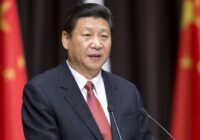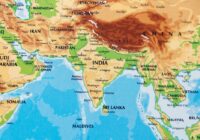It’s not just the latest IMF forecast causing concern. Many straws in the wind point to tougher times ahead.
The International Monetary Fund (IMF) has once again cut its global growth forecast for 2019. In its new semi-annual World Economic Report, the organization now projects a 3.3% growth rate, down from the 3.5% it predicted in January, 3.7% in October and 4% a year ago. Key reasons for the downward revisions: the US-China trade war and the potential for a disorderly Brexit.
Added to those concerns is a general tightening of monetary policy globally, particularly the spate of interest rate increases in the US. IMF chief economist Gita Gopinath wrote that with 70% of the global economy seeing a slowdown in growth, it is “a delicate moment right now.”
What might strike some as the relatively small size of the recent decreases in the IMF’s forecast belies the large impact such cuts in growth can bring on the ground to people and businesses, particularly in countries already struggling that could easily be tipped into a recession. At the same time, it’s worth noting that each of the IMF concerns has been partly ameliorated more recently. The immediate Brexit risk has been pushed back by a deadline extension to October, the outlook for the US-China trade war — at this moment at least — looks more sanguine, and the US Federal Reserve has clearly become more dovish, making further rate increases this year unlikely and raising the possibility of a rate cut.
Plenty of concerns about the world economy nevertheless remain. “A recent collapse in global trade is the worst since the financial crisis and as steep as during the recession of the early 2000s,” notes this report from The Telegraph. Citing figures from the CPB Netherlands Bureau for Economic Policy Analysis, the report pointed out that global trade has fallen “1.8% in the three months to January compared to the preceding three months.” The article added, however, that markets seemed to be recovering in early 2019, thanks to reports that the US and China appear closer to a trade accord.
Long-Term Concerns
Meanwhile, there are many reasons for concern over the longer-term prospects for global growth, and even the newly-revised IMF forecast is too optimistic, said Ashoka Mody, former deputy director of the IMF’s research and European departments, and Joao Gomes, a Wharton finance professor. In the short term, both expect slower growth than the IMF projects, though neither sees a US recession as likely up until 2020 at least. But they noted that beyond the immediate trouble that lower global economic growth would bring is a more pervasive, long-term drift towards slower growth driven by mega trends such as China’s reaching economic maturity — and settling into a much slower growth rate — and aging populations in many of the world’s richest economies, especially China and Europe. The two experts made their comments on the Knowledge@Wharton radio show on SiriusXM.
According to Mody, who is a visiting professor of international economic policy at Princeton University, “The world has been on a secular declining growth rate path. That matters because there have been brief periods when we lift off from that downward trend, and those brief periods are essentially driven by China.” The overarching problem now, however, is that China itself is trending towards slower growth. “Rich countries do not grow perpetually at 7% to 8%. Therefore, the Chinese growth rate has to come down.”
For Mody, the question is not whether China’s economic growth will slow, but how fast it will happen and “whether it can manage that without a crisis.” China occasionally pumps up its economy, but the resources to do so are thinning out. “I expect that in the second half of 2019, and certainly the early part of 2020, the Chinese economy will continue to slow. World trade will continue to slow,” he said.
Gomes agreed that China is an economic fulcrum for much of the world, along with the US. When China’s economy slows, it’s “a real problem for virtually most of Latin America” and Africa, mostly because of lower commodity exports and investments. The strong downward effects on many countries, such as Australia, have long been noted. “And then there’s the auto manufacturers in Europe that really depend on China and China’s market … A lot of the slowdown in Europe has been tied to the trade wars and the prospects of the slowdown in China, and what exactly the Chinese consumers have access to now,” Gomes said.
 Added to the risks in Europe are the new threats by the Trump administration to slap $11 billion in tariffs on various European Union imports because of subsidies to the European aerospace behemoth Airbus. Just hours later, the EU was preparing retaliatory tariffs on some $12-billion worth of US products based on similar claims of subsidies to Boeing. Both sides have been arguing over subsidies for nearly 15 years, and now the World Trade Organization has ruled that cases on both sides have at least some merit. The US and the EU have asked WTO arbitrators, meantime, to approve appropriate countermeasures.
Added to the risks in Europe are the new threats by the Trump administration to slap $11 billion in tariffs on various European Union imports because of subsidies to the European aerospace behemoth Airbus. Just hours later, the EU was preparing retaliatory tariffs on some $12-billion worth of US products based on similar claims of subsidies to Boeing. Both sides have been arguing over subsidies for nearly 15 years, and now the World Trade Organization has ruled that cases on both sides have at least some merit. The US and the EU have asked WTO arbitrators, meantime, to approve appropriate countermeasures.
Europe Bears the Brunt
According to Mody, the biggest impact from China’s slowdown will be in Europe, because trade is so important to the region. It’s being felt in Germany, which looks to be nearing a recession, he added. Italy already is in recession. With China slowing, the “sugar high” of tax breaks already wearing off in the US, and “Europe completely dependent on world trade … I’m not able to see what the major sources of growth are.” Mody suggested that the IMF forecast is too high, and “we may end this year closer to just 3% and therefore be in a somewhat dire situation, particularly in countries like Italy, which are very precariously balanced right now.”
Longer term, should growth in China slow to 3% to 3.5% a year, then world trade will drop to 2.5% to 3% annually. That is “catastrophically low” for EU countries.
“Italy will be in almost permanent recession, with its huge financial burdens. We have the making of a crisis … [Right] now, I’m not quite clear how we can avoid that.” Mody noted that in his book, Euro Tragedy: A Drama in Nine Acts, “I call Italy the fault line in Europe. That fault line has been steadily deepening … Italy is now in recession. My view is that it is now on the threshold of a financial crisis … and could get tipped over at any time.” If you drew a checklist of factors that cause a financial crisis, “Italy has all of them.” What’s more, various European safety nets designed to save Ireland and Greece are not adequate to help Italy, whose sovereign debt is similar in size to the debts of Germany and France.
Gomes added: “We live in a world where we’re getting older and productivity is slowing down … If you take a 10 to 20-year outlook, we are going to slow down. That’s just a fact … I think everything you see on the horizon is negative.” Gomes, like Mody, does not see any obvious sources of strong growth in the near term — certainly none with the strength to reverse the trend.
“The ECB [European Central Bank] has no room for monetary policy anymore,” Mody pointed out. “I think that is very important to understand … In terms of the big possibility of monetary stimulus, it has nothing left to give anymore.” The same is true for fiscal policy, he adds.
Gomes agreed that Europe is the most vulnerable part of the world to recession right now. “The question is, how do you solve this? And really, none of us knows. That’s the honest truth.”
*[This article was originally published by Knowledge@Wharton, a partner institution of Fair Observer.]
The views expressed in this article are the author’s own and do not necessarily reflect Fair Observer’s editorial policy.
Support Fair Observer
We rely on your support for our independence, diversity and quality.
For more than 10 years, Fair Observer has been free, fair and independent. No billionaire owns us, no advertisers control us. We are a reader-supported nonprofit. Unlike many other publications, we keep our content free for readers regardless of where they live or whether they can afford to pay. We have no paywalls and no ads.
In the post-truth era of fake news, echo chambers and filter bubbles, we publish a plurality of perspectives from around the world. Anyone can publish with us, but everyone goes through a rigorous editorial process. So, you get fact-checked, well-reasoned content instead of noise.
We publish 2,500+ voices from 90+ countries. We also conduct education and training programs
on subjects ranging from digital media and journalism to writing and critical thinking. This
doesn’t come cheap. Servers, editors, trainers and web developers cost
money.
Please consider supporting us on a regular basis as a recurring donor or a
sustaining member.
Will you support FO’s journalism?
We rely on your support for our independence, diversity and quality.






